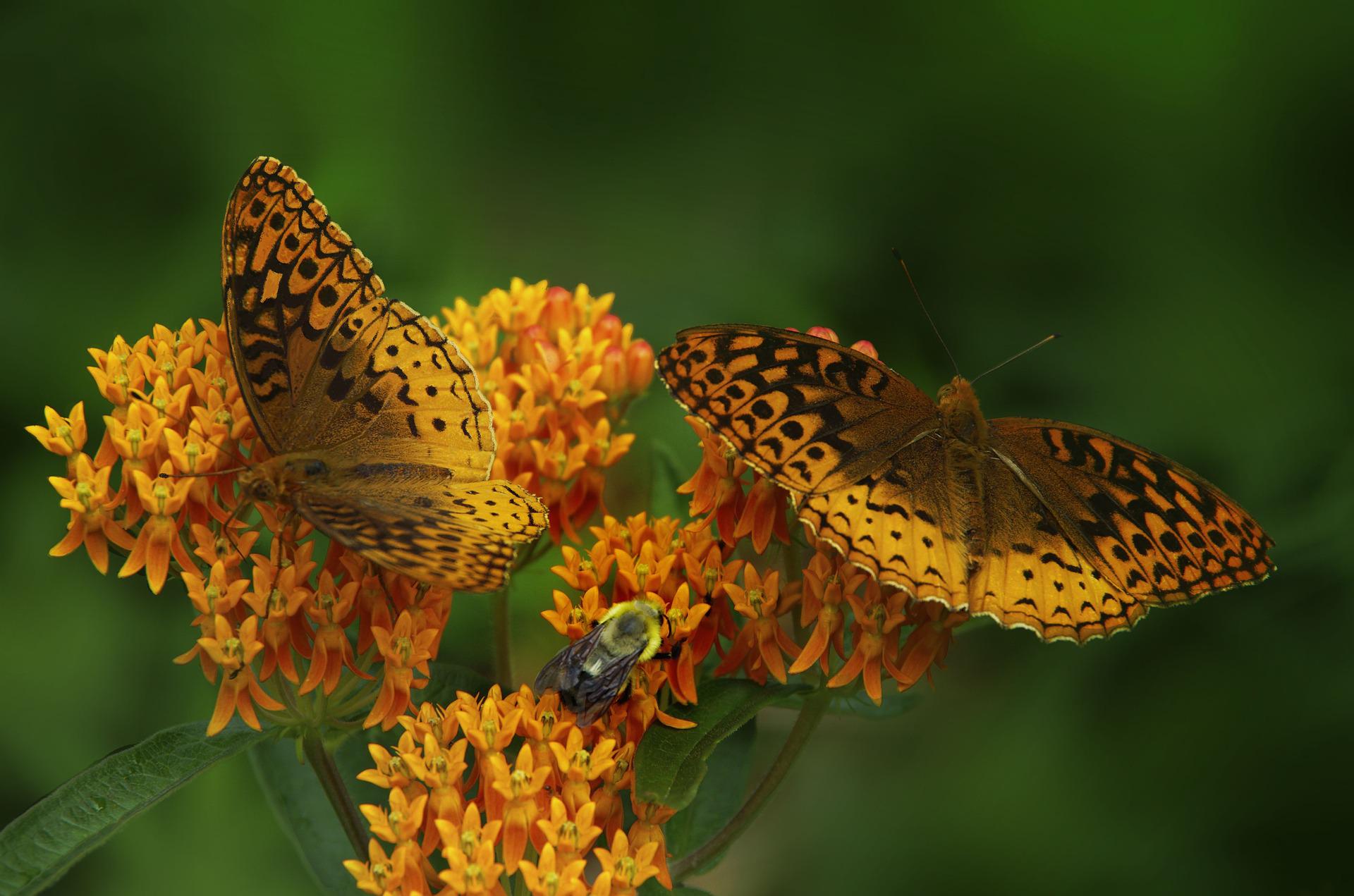Now is the time to make your yard or garden wildlife-friendly. Whether you’re a gardening novice with a small balcony or a gardening pro with a few acres, you can provide for local wildlife by planting with purpose. Wildlife gardens not only help butterflies, bees and birds, but they are also a source of solace for you and a healthy solution for the planet!
Pollinator populations, like bees and butterflies, increase over the warm summer months, often when supplies of pollen and nectar are low. Planting perennials – especially natives – can help with the shortage and help out the pollinators. Native plants are the core of any habitat garden because local wildlife relies on native plants for survival.
What are Native Plants?
A plant is native if it has grown naturally in a particular region, ecosystem, or habitat without human introduction. They have formed symbiotic relationships with native wildlife over thousands of years, and therefore offer the most sustainable habitat for the planet.
Native plants help the environment the most when planted in places that match their growing requirements. They will thrive in the soils, moisture, and weather of your region. That means less supplemental watering, which can be wasteful, and fewer pest problems that require toxic chemicals. Native plants also assist in managing rainwater runoff and maintain healthy soil as their root systems are deep and keep soil from being compacted. Natives also help the planet by removing excess carbon from the air and storing it in their leaves and root systems.
Planting with Purpose Makes a Difference
Native plant gardens that incorporate blooming plants in all seasons are proven to increase pollinator abundance and diversity. Many also support songbird species. Each of these garden plots provides a “pit stop” habitat in areas broken up by our human presence.
The good news is you can enact change right where you live.
 How to Create a Wildlife Habitat Garden
How to Create a Wildlife Habitat Garden
- Start by choosing a location for your wildlife garden. Look at your landscape. Is the spot for your new garden full sun? Shade? Evaluate these elements first. Sun-loving natives need at least 6 hours of sun. Otherwise, look at more shade-loving native varieties.
- Next, choose plants that will thrive in your Pick a combination of plants that include keystone plants. Keystone plants support 90% of butterflies, moths, and up to 60% of native bees in a specific ecoregion. Plants such as orange butterfly weed (Asclepias tuberosa), lanceleaf coreopsis (Coreopsis lanceolata), smooth blue aster (Symphotrychum laeve), and stiff leaf goldenrod (Solidago rigida) are good choices.
- Design for a succession of bloom. Pollinators, specifically, rely on plants for food in four seasons, and your garden will be more interesting that way.
- Place taller plants in the back, next medium-sized, and finally smaller plants in front.
- Remove weeds from the bed before planting and keep up with them during the season.
- Keep newly planted plants well-watered. After your first season, perennial natives will be adapted to the site and need less maintenance.
- Enjoy!
Our Favorite Native Perennials to Attract Pollinators
- Black-eyed Susan (Rudbeckia ssp.): Blooming heavily from midsummer to fall, black-eyed Susan always makes a strong comeback in spring. Every landscape is improved with a mound of this vigorous perennial bloomer. Grown best in full sun, but will tolerate partial sun as well.
- Aster: The lovely pink or lavender blooms attract a wide range of late-season butterflies and beneficial insects. Darker purple strains look stunning with a light background such as a white picket fence. In a sunny spot, space plants 1-3” apart depending on the variety.
- Joe pye weed (Eutrochium purpureum): Moist spots are perfect for this flower, which produces billows of airy pink florets in late summer. The native form can reach 3’-12’ tall, but improved cultivars grow to half that size, and they bloom in brighter colors, too. Best planted with a 2’ center for plenty of room to grow.
- Stonecrop (Sedum): One of the most dependable perennials you can grow, ‘Autumn Joy’ and other vigorous varieties will quickly establish themselves as permanent garden residents in any sunny spot. The early fall flowers attract a wide range of beneficial insects, and make excellent cut flowers as well.
When we create wildlife habitat gardens in each of our backyards, it works. Research shows that wildlife habitat gardens can support 50 percent more wildlife than surrounding conventional landscapes. Wildlife can appear within days or even moments after food, water, cover and places to raise their young are introduced to the space.
Questions on how you can help support pollinators right from your garden? We’re here to help. Email us at [email protected], or visit our stores.
And please follow us on social media and share photos of your pollinator plants! Because we love plants as much as you do!
